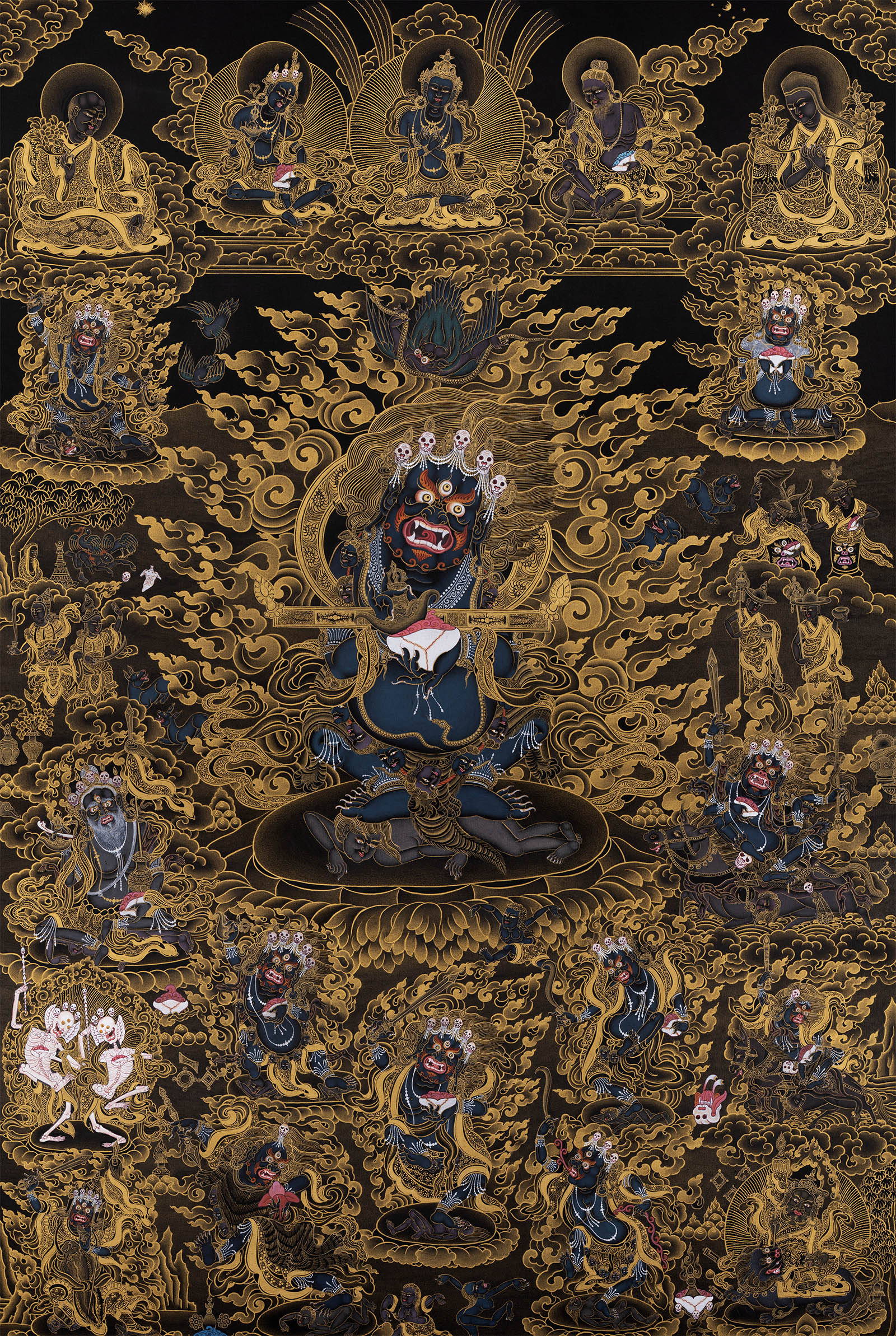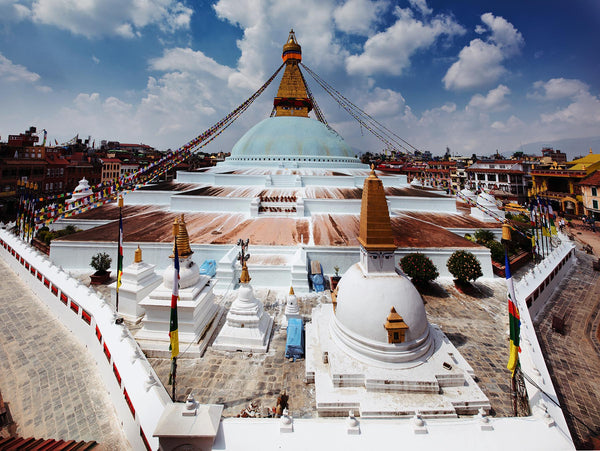The highest yoga tantra involves the arousal of both mental and physical forces, of enormous power. When channeled in the right way, their transformative effects are highly beneficial.
But when they are performed with wrong motivation or without proper guidance, they can result in unfortunate events like disease, insanity. Or sometimes, it may also result in an untimely death.

Story of a Yamantaka Practitioner:
Once there was a practitioner of Yamantaka. He was obsessed with the personal power that he achieved through his advanced tantric practice. His meditative concentration was strong and stable. However, his motivation was without compassion. His only interest was to gain worldly benefit for himself. He meditated single-pointedly upon himself in the form of Yamantaka. He developed his clear appearance and divine pride of being this powerful, wrathful deity.
After he died, a realized tantric master was asked, what had become of him. The master replied that because of his impure, selfish motivation he had not achieved any realizations at all.
Also, he had taken rebirth in the lower, suffering realms as a preta, a wandering, and dissatisfied spirit. However, as the result of his intense practice, the preta had the outward form of Yamantaka!
This depicts the possible results of practicing wrathful deities with the wrong motivation. There are two types of dangers included:
External and Internal
The external dangers consist of outside forces, that interfere with the successful completion of our practices. They also prevent us from accomplishing our worldly aims.
Just like magnets attract the metal, often times the pure intention of the practitioner attracts hindrances. This is further supported by the event of Shakyamuni Buddha's life event. While seated under the Bodhi Tree, Buddha was attacked by Mara and his minions. They were intent on disturbing his meditation.
This is one of the main reasons, it is highly suggested to keep one's practice a secret. Also, the practitioners must maintain a humble appearance to avoid any kinds of external hindrances.
"Exposing our practices to others and boasting about being a tantrika is like letting everyone know that we are carrying around precious jewelry. Sooner or later we shall attract thieves intent on stealing our valuables"
Internal dangers arise from delusions and pride. They obscure the essentially pure nature of our minds. As long as we remain in samsara, it is too easy to be deluded by mistaken conceptions. We break vows for selfish intentions.
Those practitioners engaging in the highest yoga tantra need protection from these external and internal interferences.
Thus, there exists a pantheon of wrathful deities known as Dharmapala or Dharma protectors. One of the prominent figures is Mahakala.
Six-Armed forms of Mahakala
His body is painted dark blue or black. This symbolizes his changeless dharmakaya nature.
His three eyes symbolize his clear comprehension of past, present, and future.
His skull crown represents the five poisonous delusions-anger, desire, ignorance, jealousy, and pride which are transformed into the wisdom of the five buddha families.
Mahakala's six arms signify the completion of the six perfections. He holds various implements to perform his protective functions.
First Right hand: Curved knife | cuts our ego and attachment
First left hand: Skull cup filled with blood | subjugates evil powers
Rest of the right hands:
1. Rosary of skulls | symbolizes his activity for benefit of benefits
2. A Damaru | exerts control over all classes of Dakinis
Rest of the left hands:
1. A Trident | symbolizes his power over three spheres of existence
2. A lasso | binds those who break their vows
Mahakala's left leg extends outwards and his right is bent.
This symbolizes his accomplishments for the benefit of others and oneself.
He tramples on an elephant-headed deity. This represents his destruction and dispersal of great obstacles. The elephant also represents the use of wealth for limited samsaric pleasures. And Mahakala's domination shows the enlightened transformation of such worldly behavior.
He stands upon a sun disc, symbolizing his illumination of the darkness of ignorance. The lotus symbolizes his undefiled purity.
The fire blazes from all the pores of his body. It demonstrates his powerful activities in consuming all neurotic states of mind.
He wears a tiger skin, a snake necklace and holds an elephant skin. These three represent his purification of desire, anger, and pride. His ornaments symbolize the complete qualities of a fully enlightened buddha.
Depicting Mahakala in Tibetan Thangka:
Even though Mahakala is depicted as a central figure in thangka (occasionally), it is common to assume a subordinate position.
While depicting in Tibetan thangka painting, the main figure is always the meditational deity. Above them, are the lineage gurus and heads of the Buddha family.
On the bottom of the painting are either one or more dharma protectors, who are related to the main practice. Despite the presence of numerous figures in thangka, they all are manifestations of one's own kind root guru. He is seen as inseparable from the buddhas of the past, present, and future.
Mahakala is a manifestation of Avalokiteshvara, the embodiment of universal compassion. Avalokiteshvara realized that his peaceful methods were too mild to subdue the degenerate beings. So, he manifested in a wrathful form to accomplish his compassionate intentions.
He emanated the dark blue syllable HUM which transformed into the powerful Mahakala. Amitabha and all the buddhas of the ten directions praised Avalokiteshvara's resolve to benefit others by means of this wrathful form. They predicted Mahakala to serve as a dharma protector in all realms.

Shavaripa | Greatest Practitioners of Mahakala
One of the major practitioners of Mahakala was Shavaripa. He is also one of the eighty-four Mahasidda. He was a mighty hunter. Avalokiteshvara sought to tame him by manifesting as a superior marksman. Shavaripa begged him to teach to shoot as he did. Avalokiteshvara promised to do so, but he put a condition that Shavaripa should not eat meat for a month.
This way, the hunter and his wife abandoned their life-long habit of killing animals. They became vegetarians. They learned to meditate upon loving-kindness and compassion for all living creatures. They also developed sincere regret for their harmful deeds of the past. After twelve years of meditating, Shavaripa attained the supreme realization of Mahamudra. He received empowerment from Mahakala directly. Many other deities including Tara and Vajrayogini bestowed their blessings on him. He became a great teacher of the dharma. And he transmitted the enlightening teachings through his song and dance, sound and symbol.
It is also believed Shavaripa to stay on the earth until Maitreya Buddha appears and turns the wheel of dharma. Mahakala practices are popular among practitioners but such powerful techniques are not without their dangers.
"If the practitioner ventures onto the dangerous ground, unhealthy for his progress on the path, the Dharmapala principle pulls him back violently."
Only when we develop the confident strength of our personal meditational deity (such as Yamantaka or Chakrasamvara), we qualify to call upon a protector like Mahakala for support.
For instance: if we are in possession of a dangerous guard dog, there is always the risk that it will turn back and attack us if not treated properly!
Mahakala in Sutra Path:
According to Atisha, Je Tsongkhapa, and other Buddhist masters, the sutra path is divided into three graded scopes. Each one corresponds to a different level of practitioner.
For example: The trainee of initial scope is mainly concerned with detaching from the inducing sensory desires. The main method for cultivating such detachment is a meditation upon death and impermanence. Here, they can rely on Dharmaraja, chief protector of Yamantaka, the "Slayer of the Lord of Death,"
For the practitioners of the middle scope, the main practices are the training of morality, concentration, and wisdom. The most fundamental practice is morality. The practitioner here is protected by Vaishravana. He is the guardian who helps those attempting to keep pure moral discipline.
The trainee of the highest scope practices the development of the compassionate Bodhichitta. Mahakala, as an emanation of compassionate Avalokiteshvara, is the main protector.
For the advanced tantric practitioners, Mahakala fulfills the four enlightened activities. These activities are pacifying interferences, increasing favorable circumstances, gaining control over situations and-if all else fails-destroying obstacles with wrathful force.
His Holiness the Dalai Lama has said, those wishing a Dharmapala practice should remember that the best protection of all is one's own development of a kind and loving heart. As Shakyamuni was protected from the attacks of Mara by his meditation, we shall be safeguarded from outer and inner harm through our own generation of loving-kindness.
For serious practitioners, Dharma protectors such as Mahakala practice hold great importance. The following stanzas are the homage paid to him by the First Dalai Lama. He was himself an emanation of Avalokiteshvara.
Homage to Mahakala, the Great Black One,
Wrathful emanation of the Bodhisattva of Compassion.
Homage to Mahakala,
whose implements are The skull-cup of blissful wisdom
and the knife Of penetrating methods severing negativity,
The Black Lord of ferocious appearance
Whose voice causes all on the earth to tremble.
O Mahakala, you appear in the form of a terrible demon
In order to overcome the endless hosts of demons.
Like the first day of the new moon,
You herald the destruction of the forces of darkness.
Protective lord, whose fangs are love, compassion, equanimity and joy,
Whose body blazes with fires of wisdom,
Your mantra is like the roar of a lion
Causing the jackals of evil to scatter.
Just as the angry yak catches its enemies on its horns
And then shakes the very life out of them,
Similarly do you destroy the inner forces
By which we obstruct our own path to liberation!
Source: Images of Enlightenment, Andy Weber


